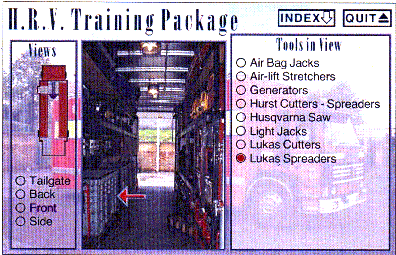
Chris Johnson
Over the last three years we have developed a range of Computer Aided learning (CAL) packages that use desktop virtual reality (desktopVR) techniques. This paper describes some of the problems that have arisen during the evaluation of these applications.
DesktopVR techniques, including Virtual Reality Mark-up Language (VRML) and QuicktimeVR, have been introduced into a wide range of CAL interfaces (Johnson, 1998). However, it is difficult to determine whether these presentation techniques actually support users' needs. Valid empirical measures are hard to identify because desktopVR often supports many different users with a wide range of learning needs (Johnson, 1998a). The users of the Hunterian Museum system, described below, were identified as school children, undergraduates, curators and archaeologists. More qualitative techniques, such as think alouds, focus on the superficial appeal of the technology if they are not supported by longitudinal studies (Sutcliffe and Kaur, 1998).
This paper uses two case studies to illustrate the practical problems that arise when attempting to validate desktopVR. The first case study focusses on a range of CAL tools that were developed to support the training activities of a regional fire brigade. The second case study focusses on the use of desktopVR within a visitor information system for the Hunterian Museum in Glasgow.
Fire Officers are required to possess practical skills. For example, they are frequently called upon to use breathing apparatus during fires. They are also increasingly expected to have specialised technical knowledge. Officers must know how to apply the latest foam technology to combat a range of different fires. CAL tools are perceived by many in the Fire Brigade as a cost effective means of delivering technical knowledge and practical skills. They are particularly appropriate for an organisation whose members are scattered amongst many different stations.
Fire fighters are often characterised by activist learning styles. It has been argued that they learn more effectively through direct experience than through the mediation of books or lectures (Johnson, 1998). DesktopVR techniques, therefore, provide important benefits for the development of CAL in the fire brigade. Fire fighters can learn by interacting with objects in virtual environments rather than by passively listening to conventional lectures. Figure 1 shows how this approach can be applied to a Heavy Rescue Vehicle (HRV). The photo-realistic facilities of QuicktimeVR provide a three-dimensional representation of the storage area inside the HRV. Fire fighters can use a conventional keyboard and mouse to move inside the QuicktimeVR image (Johnson, 1998). Equipment is located through exploration using the desktopVR view, shown in the middle panel of Figure 1, or by selecting an item from the list on the right.

Figure 1: The Heavy Rescue Vehicle Training Package
The HRV package also provided detailed information about the equipment on the vehicle. Hypertext was used to provide electronic access to existing technical notes. Video clips were used to show the equipment "in action". Figure 2 shows how QuicktimeVR enabled fire fighters to manipulate individual items of equipment.

Figure 2: An Object Rotation of Lucas Cutters on the Heavy Rescue Vehicle
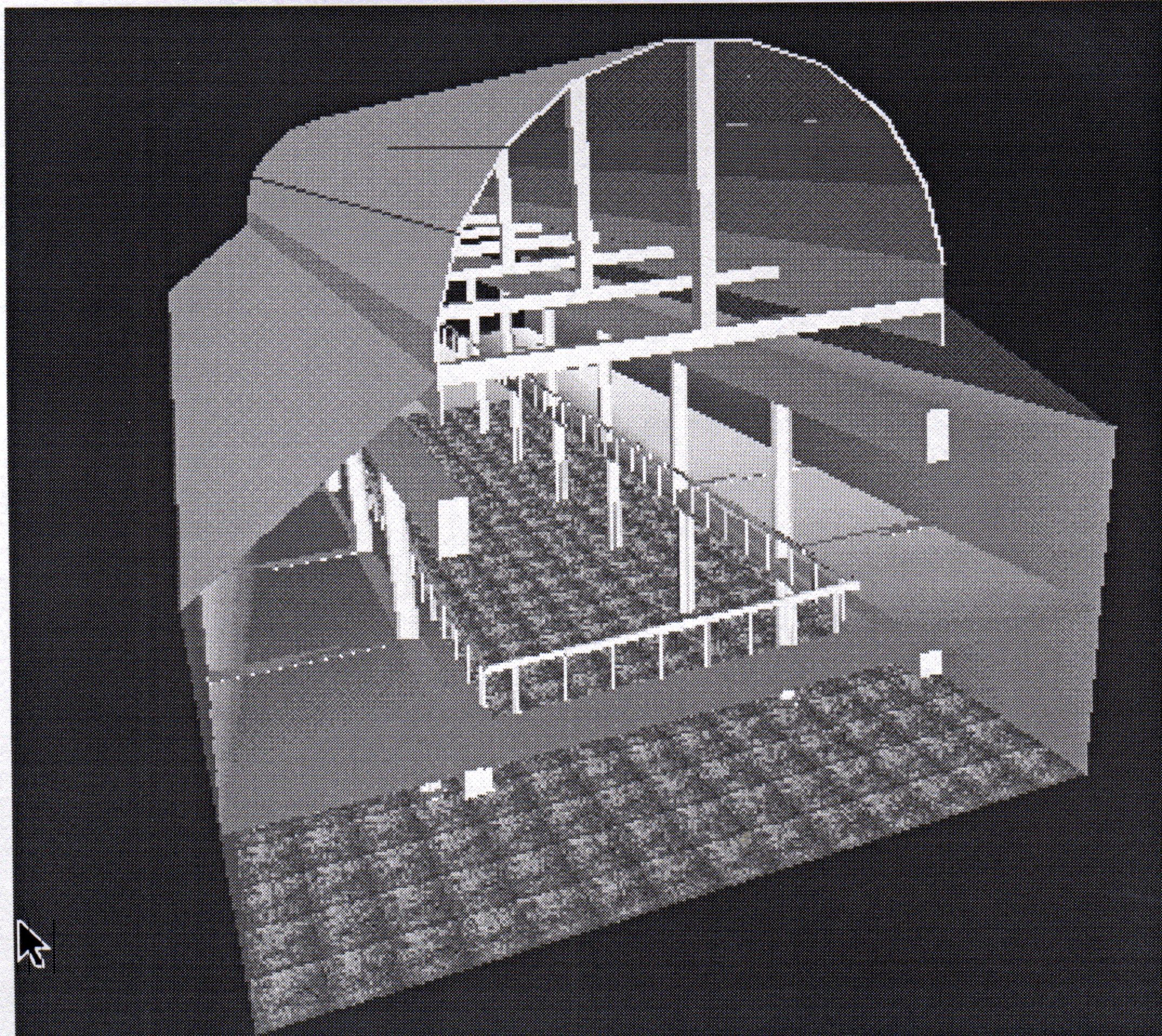
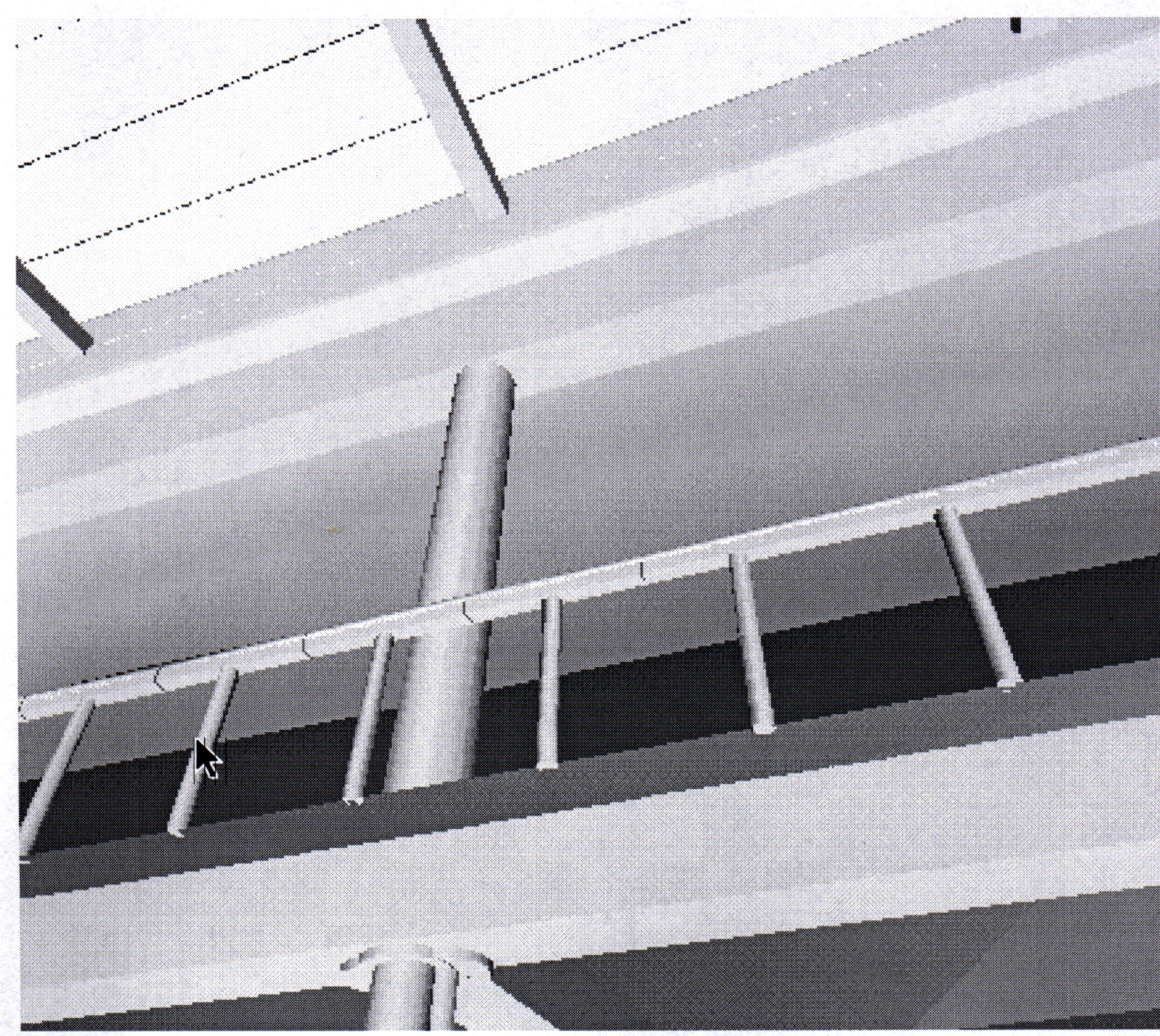
Physical, or rather virtual, locations provided information about the relationships between objects. Roman tools could be held in one area of the gallery, information about weapons would be held in another and so on. As the user moves through the gallery, then these collections change to reflect different time periods. This strategy reflects the careful planning that goes into the layout of `real-world' museums. Within each section, the VRML gallery could contain QuicktimeVR movies as well as video clips and more conventional presentations. Figure 4 presents an excerpt from one of these videos.

Figure 3: Perceived "Ease of Learning" in the Fire Brigade Case Study
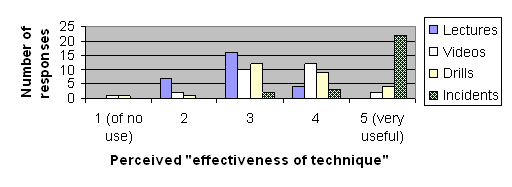
Figure 4: Perceived "Effectiveness of Learning" in the Fire Brigade Case Study
Unfortunately, the subjective responses to the previous questions do not provide detailed criteria against which to evaluate the contribution of desktopVR in any new CAL tool. Tables 1 and 2, therefore, present the results of questions that were intended to identify the reasons behind the assessments in Figures 3 and 4.
Table 1) What do you enjoy most about fire training?
| Topic | Frequency |
| Practical Work | 7 |
| New Experiences | 7 |
| Specific Topics | 5 |
| Team work | 3 |
| Nothing | 2 |
Table 2) What do you hate most about fire training?
| Topic | Frequency |
| Repetitiveness | 18 |
| Ladder drills | 3 |
| Too in-depth drills | 2 |
| Nothing | 2 |
These results helped to guide the formative evaluation of our desktopVR systems. Think alouds were used to ensure that the new interfaces exploited the positive features of Table 1 and avoided the negative aspects, such as repetitiveness, in Table 2. Unfortunately, this approach did not provide benchmark criteria for summative evaluation. Our intention had been to issue the questions to assess the existing situation. We would then introduce the desktopVR systems into the fire stations and re-issue the questionnaires. Ideally, they crews would then have reported high levels of subjective satisfaction with the new systems. there might even have been some positive effects on standard lectures as Instructing Officers transfered more teaching duties to the CAl application. Such an evaluation methodology is flawed for a number of reasons:
Evaluator: Do you prefer pictures or the models? User: The models are great. Evaluator: Why? User: Um, it just feels different.This analysis is confirmed by the results of post task questionnaires. For example, the following graph presents the results of asking a class of schoo l children for their opinions of QuicktimeVR within a Museum web site. The Y-axis records the number of users responding to a particular category withi n a checked list. The proportion of children who preferred not to state an opinion is striking.
The questions in Figure 3 were not intended to obtain statistically significant and replicable results. They were simply intended to provide some insight into whether or not the users supported our introduction of desktopVR. The large number of uncommitted responses to such fundamental questions can be e xtremely disappointing. Gibson provides some insight into the source of this disappointment:
`` Not only do we perceive in terms of visual information, we can also think in those terms. Making and looking at pictures helps us to fix these terms. We can also think in terms of verbal information, as is obvious, and words enabl e us to fix, classify and consolidate our ideas. But the difference is that visual thinking is freer and less stereotyped than ve rbal thinking: there is no vocabulary of picturing as there is of saying.'' (Gib son, 1971).
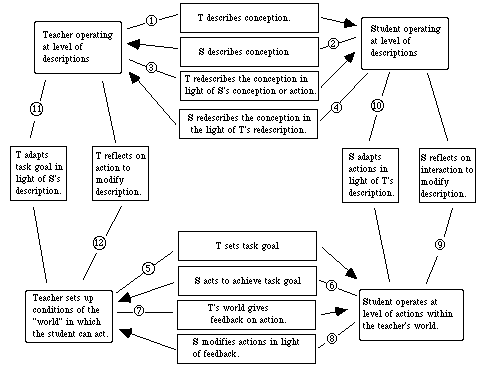
Figure 1: Laurillard's Conversational Model for Effective E ducation.
Figure 1 illustrates how both the student and teacher contrib ute to the learning process. The right-hand components of the diagram represen t the iterative process by which students modify their view of the concepts that they are being taught. They adapt their descriptions (activities 4 and 9) and modify their actions (activities 8 and 10) as they learn from their tutor's fee dback. The left-hand components of Laurillard's model describe the iterative p rocess that informs the teacher's interaction with the student. The tutor modi fies the way that they present key concepts in response to a student's initial a ttempt to express those concepts (activity 3). They also modify the tasks that they set in response to their student's initial attempts to fulfil those tasks ( activities 11 and 12). This notion of dual contribution explains Laurillard's view that education is essentially a conversation in which both the student and the teacher are attempting to maximise their common ground about the topic in qu estion. Most of the tutor's tasks in Laurillard's model can be perfor med by either a human instructor or by an appropriate CAL tool. For example, s tage five involves the tutor in establishing task objectives for the student. This could take the form of an essay title set by the teacher. Alternatively, it might be implemented as a computer generated construction task embedded withi n a virtual reality simulation. This paper, therefore, sets out to determine w hether Laurillard's model can help designers to identify appropriate allocations of training tasks within a complex and dynamic organisation (Montgomery, 1997). There is considerable evidence that such domain characteristics help to determ ine appropriate function allocations between human trainers and CAL applications (Plowman, 1996). However, most of this evidence focuses on educational practi ces in Universities or in schools. This paper, therefore, looks beyond these c onventional settings to examine the impact of function allocation within the tra ining mechanisms of one of Scotland's regional Fire Brigades.
H. Beyer and K. Holtzblatt, Contextual Design: Defining Customer Centred Systems, Morgan Kaufman, San Francisco, 1998.
S. Benford, J. Bowers, L. Fehlen, C. Greenhalgh, D. Snowdon, User Embodiment in Collaborative Virtual Environments, CHI'95 Proceedings, 242-249, 1995.
D.K. Busse and C.W. Johnson, Modelling Human Error Within a Cognitive Theoretical Framework, In F.E. Ritter and R.M. Young (eds), Second European Conference on Cognitive Modelling, 90-97, Nottingham University Press, 1998.
J. Carroll and J. Thomas, Fun, SIGCHI Bulletin, 19(3)21-24, 1988.
J. Coble, J. Karat and M. Kahn, Maintaining a Focis on User Requirements throughout the Development of Clinical Workstation Software, CHI'97 Proceedings, 170-, 1997.
J.J. Gibson, The Information Available in Pictures, Leonardo, 4, 27-35, Pergammon Press, 1971.
J. Goguen, Formality and Informality in Requirements Engineering, 2nd International Conference on Requirements Engineering, IEEE Computer Society Press, 102-104, 1996.
C.W. Johnson, The Problems of Validating DesktopVR. To appear in People and Computers XIII: Proceedings of HCI'98, Springer Verlag, Berlin, 1998.
C.W. Johnson, Why 'Traditional' HCI Design and Evaluation Techniques Fail With DesktopVR. In IEE Collquium Digest 98/437, 1998a.
R.S. Kalawsky, New methods and techniques for evaluating user performance in advanced 3D virtual interfaces. In IEE Collquium Digest 98/437, 1998.
K. Kaur, N. Maiden and A. Sutcliffe, A Study of the Design of Virtual Environments in Practice. In Proceedings of Virtual Reality World, Stuttgart, 1996.
J. Kawakita, The Original KJ Method, Kawakita Research Institute, Tokio, 1982.
R. Lea, K. Matsuda and K. Miyashita, Java for 3D and VRML Worlds, New Rider Press, New York, 1997.
K. Mattila and S. Ruuska, User needs for mobile communications devices at Nokia. In C. Johnson (ed.) First Workshop on Human Computer Interaction for Mobile Devices, 1998.
See
www.dcs.gla.ac.uk/~johnson/papers/mobile/HCIMD1.htmlD. Roberts, IBM RealThing Guidelines, see
www.ibm.com/ibm/hci/guidelines/design/realthings, 1997.G. Robertson, M. Czerwinski, M. van Dantzich, Immersion in DesktopVR, In G. Robertson and C. Schmandt (eds) UIST'97, ACM, New York.
I. Somerville, T. Roden, P. Sawyer, R. Bentley and M. Twidale, Integrating Ethnography into the Requirements Engineering Process, Requirements Engineering '93, 165-170, IEEE Computer Society Press, 1993.
L. Suchman, Plans and Situated Actions, Cambridge University Press, Cambridge, 1989.
A. Sutcliffe and U. Patel, 3D or not 3D: Is It Nobler in the Mind? In M.A. Sasse, R.J. Cunningham and E.L. Winder (eds.), HCI'96, 79-94, Springer Verlag, London, 1996.
Author, X, (1996). Title, in Proc. of Source, University Press.